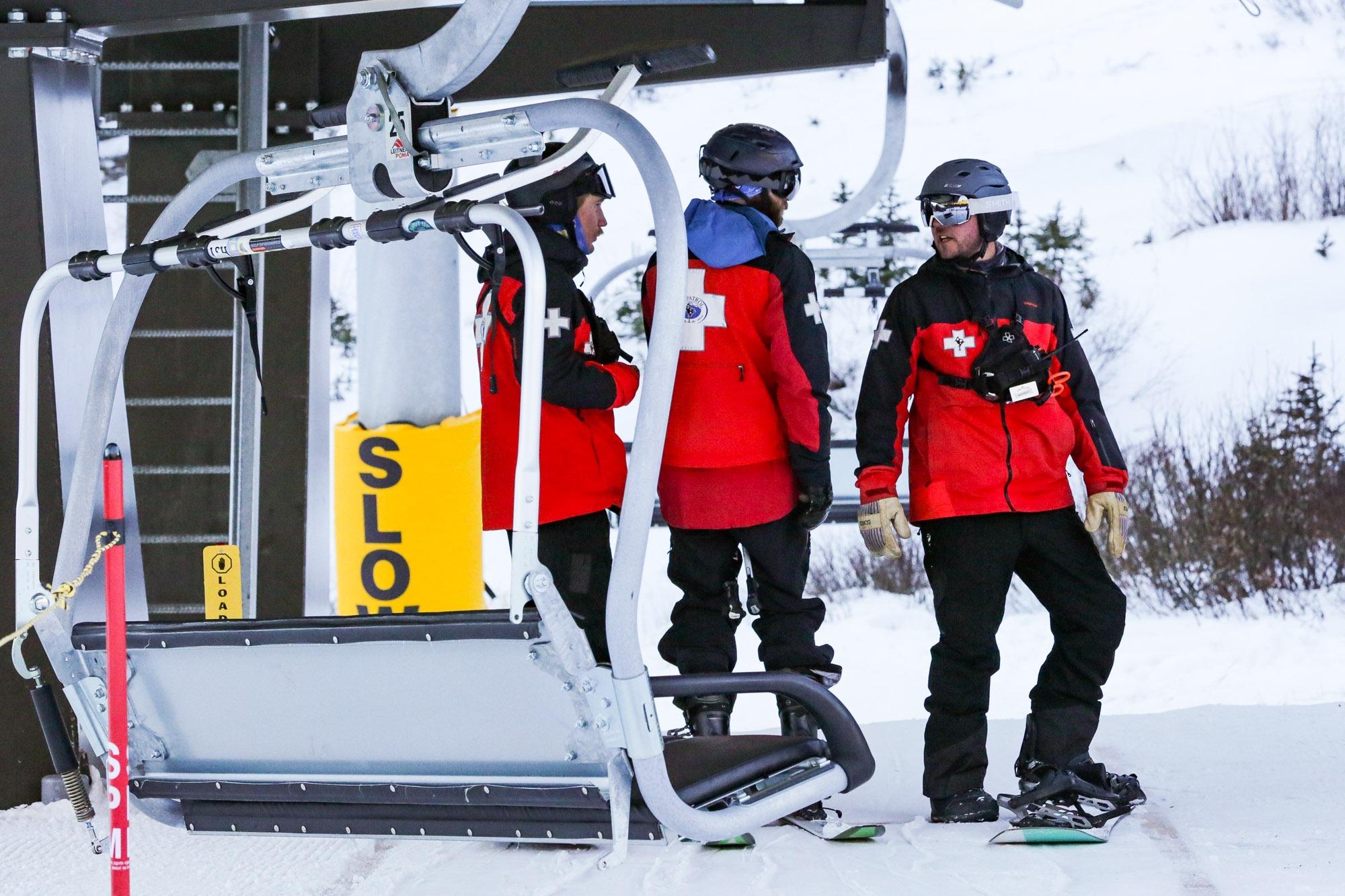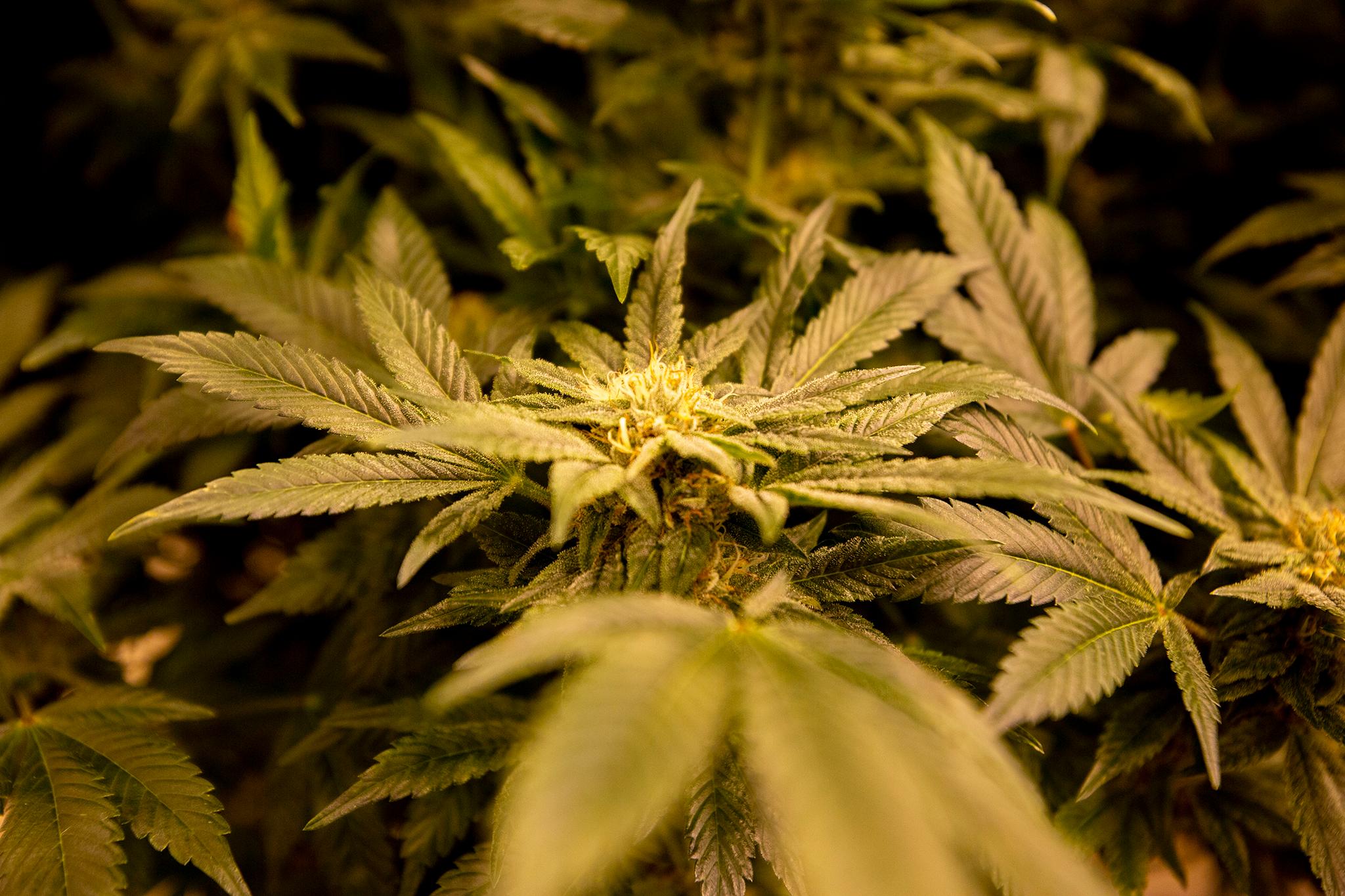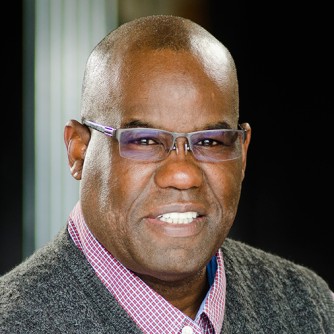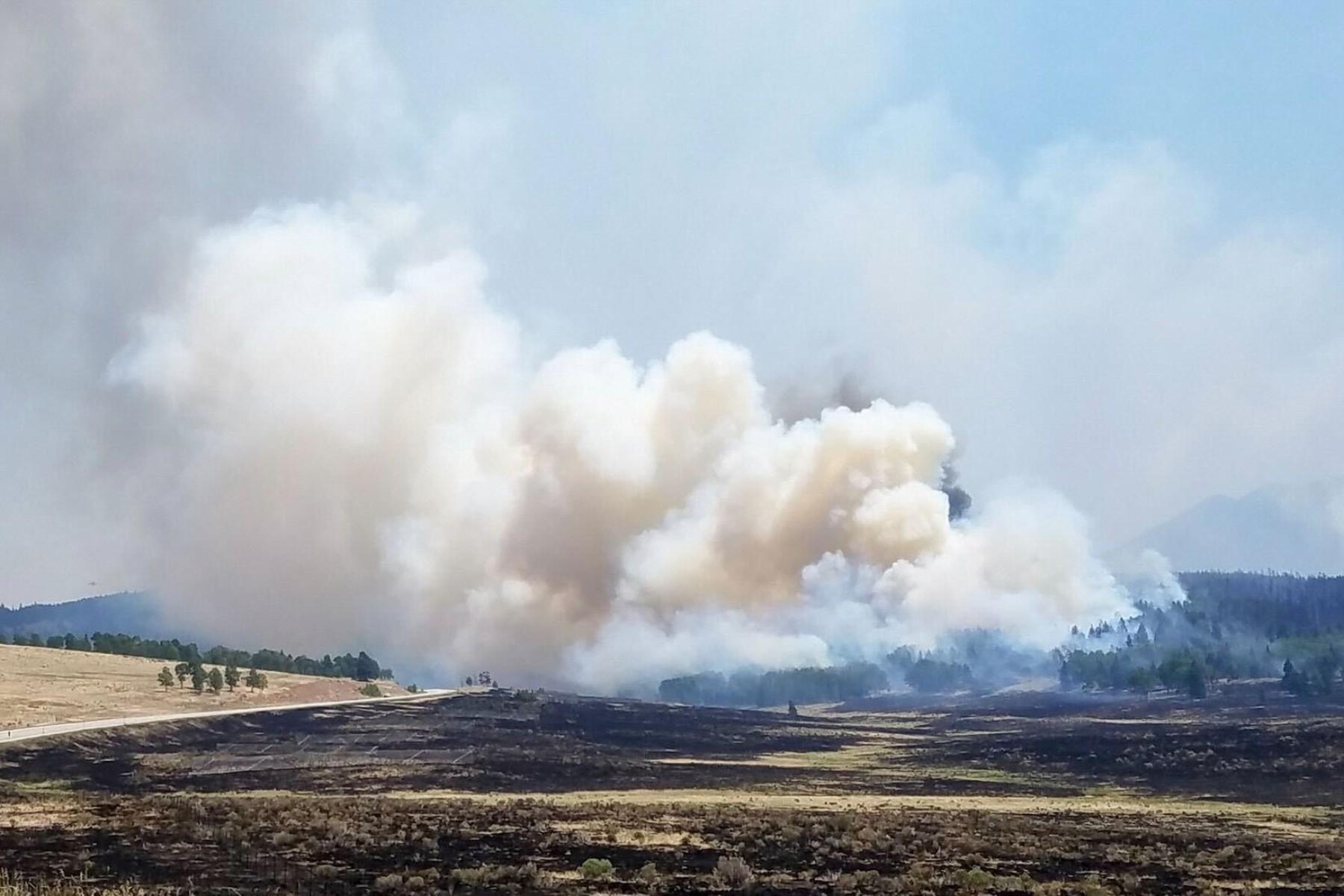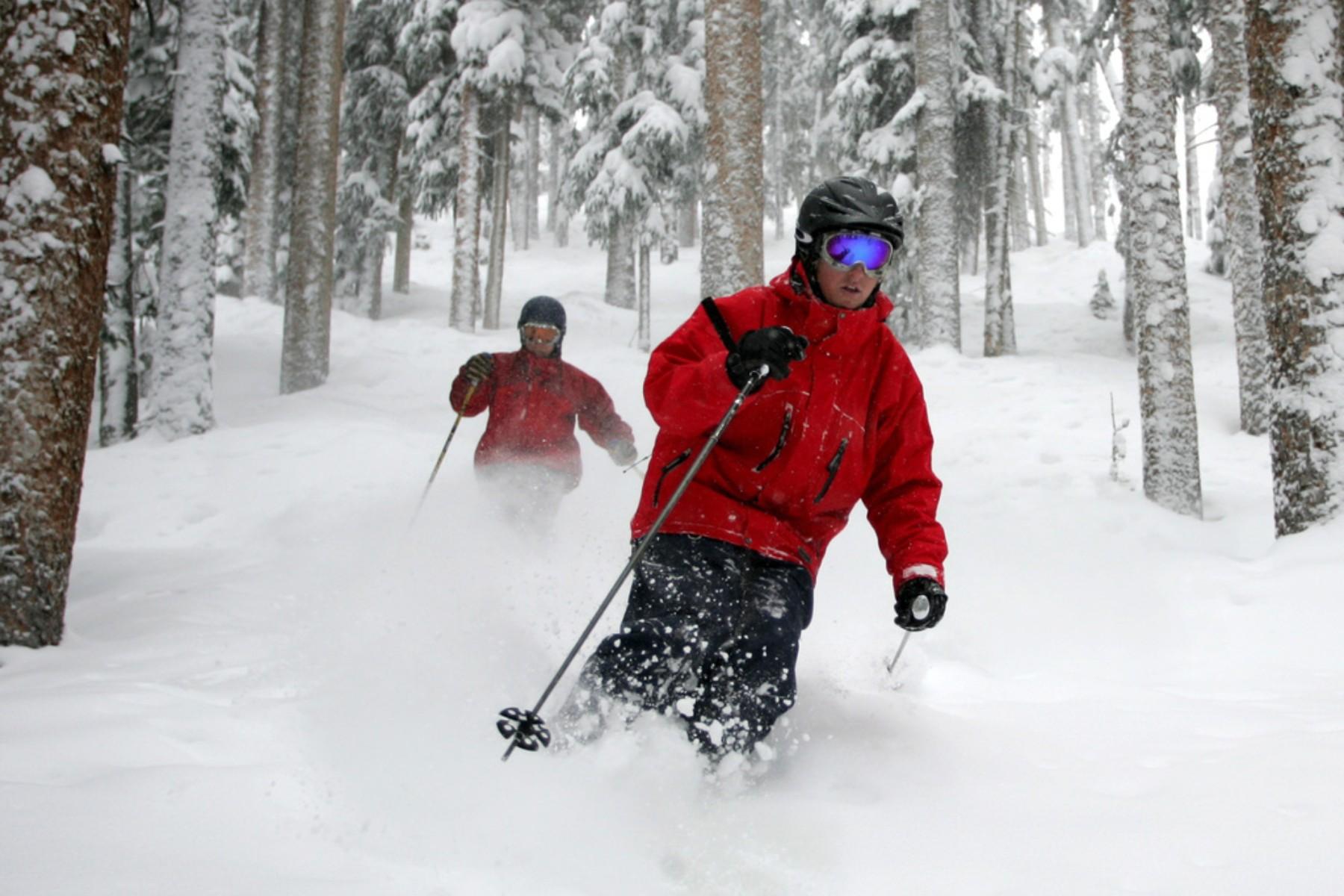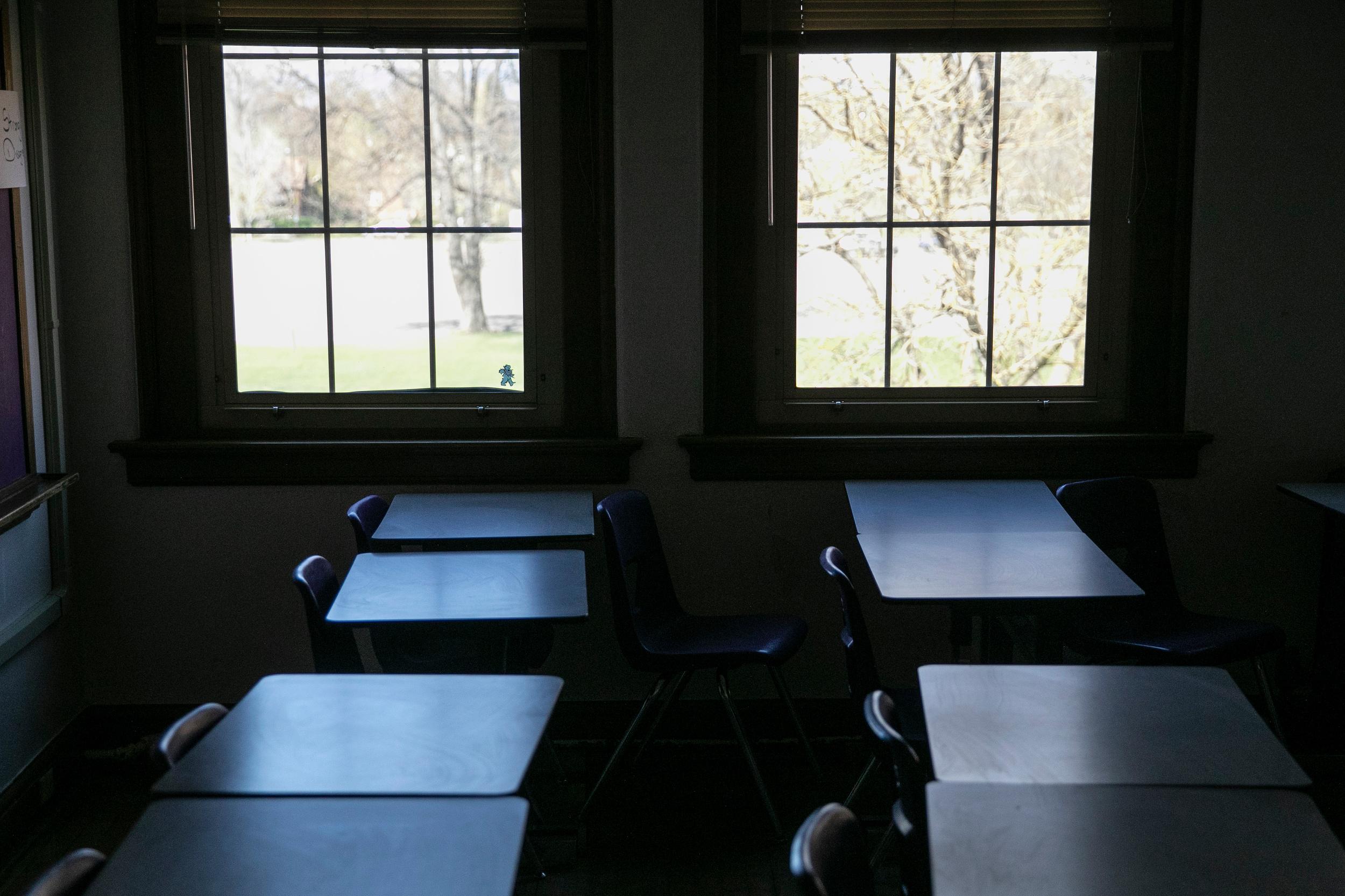
This story was originally published by Chalkbeat. Sign up for their newsletters at ckbe.at/newsletters.
By Melanie Asmar, Chalkbeat
It was Halloween, and school social worker Tricia Van Horssen was dressed as Anger, the cartoon character from “Inside Out,” when she was assaulted by one of her students.
The costume, she said, was ironic because she loves her job at a high school in Fort Collins in northern Colorado. She said her students joke that she’s always happy, even if working in a classroom for students with significant emotional and behavioral needs isn’t always easy.
That morning, one of her students came into the classroom “escalated,” she said. He was picking on another student, trying to snatch the bunny ears that the kid was wearing for Halloween. After several attempts to diffuse the tension, the student with the bunny ears slapped the student trying to grab them. That student responded by punching and choking his peer, Van Horssen said.
“I said, ‘Call for help! We need backup!’” Van Horssen said.
Van Horssen and classroom aides got between the two students. As they pulled the kid with the bunny ears to safety, Van Horssen said the other student turned on her.
He pulled her down, she said, grabbed her by the hair, and shook and headbutted her. He screamed, “I’m going to (expletive) kill you! I’m going to beat you!” she said. The aides got her free, but as she was getting up off the floor, the student kicked her in her chest.
He stood over her, continuing to shout, Van Horssen said. When the backup came, they helped Van Horssen into an office and worked on calming the student, she said.
“I had a great relationship (with him), but in that moment, he was in a rage and I don’t think he knew it was me,” she said.
“I don’t blame him,” Van Horssen added, noting that many of her students have experienced significant trauma in their childhoods that impacts their behavior.
Van Horssen provided Chalkbeat with copies of workers compensation reports that corroborate her description of her injuries. Chalkbeat also confirmed Van Horssen’s account of what happened in the classroom with former school principal Craig Woodall, who is now retired.
Aggression against teachers is a common yet underreported issue, educators and experts said, kept from public view by empathy for struggling students and fear that teachers or schools will be blamed. But a post-COVID uptick in disruptive student behaviors and several high-profile incidents nationwide are prompting groups such as the American Psychological Association to spotlight the issue and teachers unions to call for action.
In Colorado, state lawmakers in spring 2024 commissioned a task force to investigate aggression against teachers. Late last month, the task force released a set of recommendations, including that each school should have a classroom incident response team.
The task force also recommended that all school staff be trained in how to de-escalate students and each district have a plan for supporting staff after a student assault. And it recommended that the state increase the number of therapeutic alternative schools for students with severe needs. The number of such schools, as Chalkbeat reported, has dwindled over the years.
“We really have to acknowledge that educator safety is a priority,” said Chris Harms, the director of the Colorado Office of School Safety and a member of the task force.
“We heard over and over again people feeling like this has become normalized,” she said. “That people are expected to expect getting hurt on the job. And we don’t think that is what should be.”
Poudre School District, where Van Horssen works, said in a statement that it recognizes “the serious impact that incidents of aggression can have on educators.”
“When incidents occur, we follow established safety protocols and provide immediate and ongoing support to those involved,” the district said. “We are also committed to meeting the needs of every student, every day with empathy, accountability, and the belief in their capacity to grow.”
Woodall, the former principal, said a shift in perspective is needed, as well.
“School violence is often just seen as student to student,” he said. “We need to expand that definition to include student to staff. And in turn districts and schools can provide the necessary training and protocols to help reverse the nationwide trend of increased violence toward staff.”
A lack of data compounds the problem
There is little to no data on how often educators are hurt by students in Colorado. The state education department doesn’t collect any statistics, and when Harms asked state law enforcement officials for a tally, she said they found just 13 incidents over the course of a year. That didn’t add up with anecdotal stories of educators being frequently hit, bit, and scratched.
So the 17-member educator safety task force decided to survey Colorado teachers. More than 1,100 educators responded, including Van Horssen. Half said they had been injured by a student. Three-quarters said they had witnessed a student try to hurt them or another adult.
Those percentages were higher than an earlier survey by the statewide teachers union, the Colorado Education Association, in which almost a third of educators surveyed in the 2022-23 school year said they had experienced physical abuse by a student in the previous two years.
“In looking at the data, it was pretty clear that there is an issue here,” said Jamie Montoya-DeSmidt, a task force member who has worked in public schools for nearly three decades, most recently as the mental health services coordinator for Harrison School District 2.
What stuck with task force members the most were the personal stories, including one educator in a small district who told them it took half an hour for someone to respond to her call for help.
“She kept saying over and over again, ‘Nobody came. Nobody came,’” Harms said.
National data is scarce, as well. Greg McKenna works for Gallagher Bassett, a company that processes workers compensation claims for school districts. He began hunting for trends in student-on-teacher violence after journalists started asking him about it post-pandemic.
His data comes from about 2,000 schools serving more than 1 million students in states across the country, he said. It shows that in the two years before the pandemic, 20% of the schools’ claims were due to student violence against teachers.
That number dropped as low as 9% when most schools were conducting remote learning and then spiked to 25% when students returned to classrooms, McKenna’s data shows.
About 22% of claims in the school year that just ended were due to such violence, lower than the peak but higher than before COVID, his data shows.
The claims are becoming more complex too, McKenna said. More such claims involve multiple injuries and require teachers to be out of work for longer, he said. Requests for mental health support after a student assault are up too.
“We work very hard to help in these claims to rebuild their confidence and trust and try to get them back as soon as we can,” McKenna said of teachers who are injured. “If we don’t, we feel pressure. We don’t want to lose those individuals to another career.”
The task force made more than 20 recommendations
Dustin Geist has never been seriously injured on the job. But he does get bitten, spit on, kicked, pinched, and scratched on a weekly basis, he said.
As the only board certified behavior analyst in Pueblo County School District 70 in southern Colorado, his job is to help teachers and principals across 22 schools manage what he calls “big behaviors.” Most often, he said, it’s elementary students tearing classrooms apart. When adults intervene, they often unintentionally make the situation worse, he said.
“Most times, I get a call and drive right over,” said Geist, who was part of the task force.
Once he arrives, Geist said he models what to do. Even though Geist himself is the one who trains school staff, he said he’s afraid they won’t implement the procedures correctly, especially first-year teachers who often seem overwhelmed. He said he wishes he had more time for training all different types of staff, which was one of the task force’s recommendations.
In all, the task force made more than 20 recommendations. Additional recommendations include:
- Each school should have equipment “to enable instant communications between every classroom,” the classroom incident response team, and the central office.
- Each school should have a protocol for what happens during an incident and identify a space such as an empty classroom, hallway, or office that can be used to separate the aggressive student from the teacher and the rest of the class.
- Each school should have a space where teachers can take a short break after a stressful situation and a way for them to request it through texting, radios, or a push button.
- Districts and schools should have a process for documenting and debriefing incidents of violence against educators. The state should require districts to report to the Colorado Department of Education “a minimal set of facts” such as injuries sustained, support provided to the staff member, and consequences for the student.
- In the absence of alternative schools, districts should expand the number of “affective needs centers,” which are classrooms within traditional schools that serve students with emotional and behavioral disabilities.
Putting the recommendations into practice faces considerable financial hurdles, including limited state dollars, local budget cuts, and federal funding freezes.
“The biggest thing is bringing attention to it, to be honest,” Geist said. “If people understood what a dire situation this is, things might start to change.”
The root of the problem is societal, educator says
After her assault, Van Horssen said she briefly thought about quitting.
But she didn’t. Instead, she said she spent a month at home recuperating from a concussion and a broken tailbone. After her Halloween 2024 injuries, she was back in her classroom in December. Nine months later, she said she’s still in physical and mental health therapy.
Van Horssen said she didn’t know about the task force until she got an email about the survey. After she filled it out, the task force invited her to share her story. She said she decided to speak out because she feels this topic is too often swept under the rug.
“I don’t feel like it’s taken seriously,” Van Horssen said. “It’s an unsafe workplace and it’s not okay to say, ‘Deal with it.’ We need to be protected as well.”
Van Horssen appreciates the recommendations but said her case shows that violence can happen when all of the best practices are in place. Van Horssen was trained. Her school followed the protocols, she said. After the assault, she said she was “showered with love and support.”
But she said larger societal factors are often at play. Students like the ones she works with need safe homes, loving caregivers, and therapy outside of school to process any trauma they’ve experienced in their childhoods.
“If I were to say, ‘What does the student who assaulted me need?’” Van Horssen said. “What he needs we don’t have.”
Melanie Asmar is the bureau chief for Chalkbeat Colorado. Contact Melanie at [email protected].

